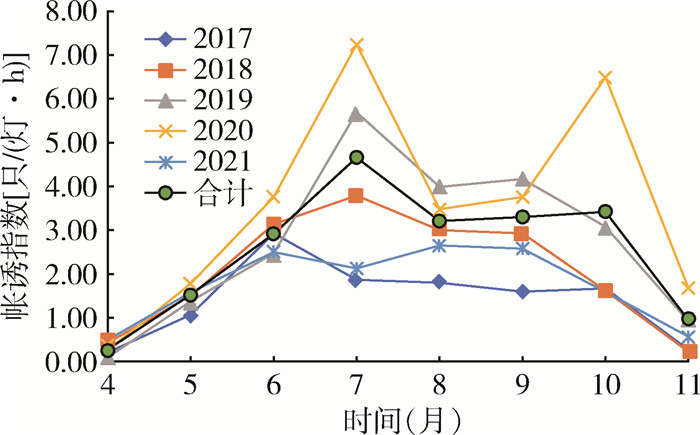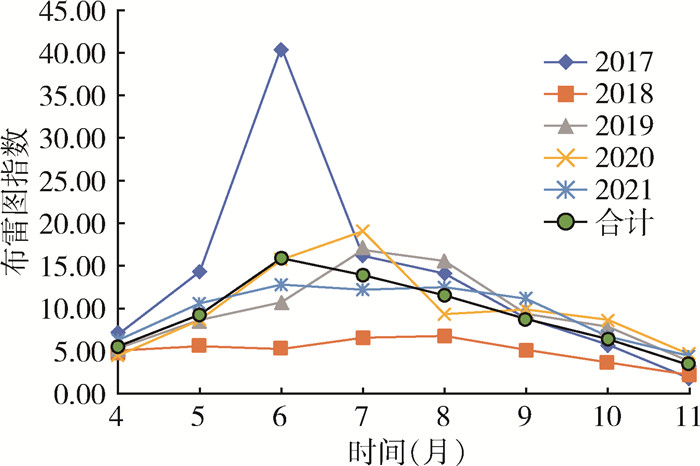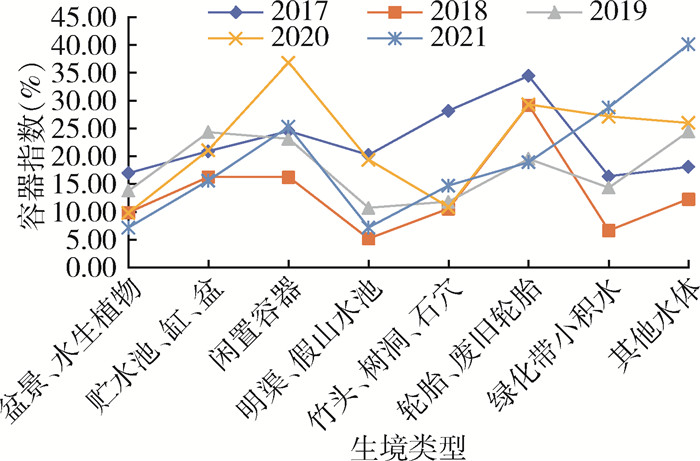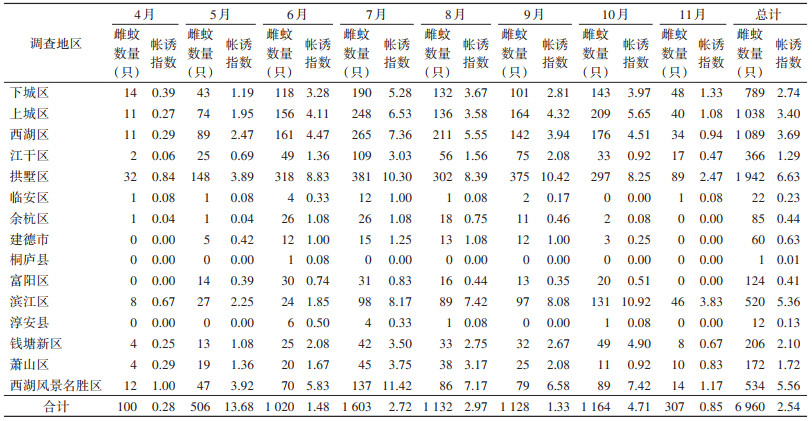| 1 |
Bhatt S, Gething PW, Brady OJ, et al. The global distribution and burden of dengue[J]. Nature, 2013, 496 (7446):504-507.
DOI
|
| 2 |
Brady OJ, Gething PW, Bhatt S, et al. Refining the global spatial limits of dengue virus transmission by evidence-based consensus[J]. PLoS Negl Trop Dis, 2012, 6 (8):e1760.
DOI
|
| 3 |
邹钦. 广东省2014年登革热疫情防控实践与思考[J]. 中华卫生杀虫药械, 2015, 21 (6):630-632.
DOI
|
|
Zou Q. Practice and thinking for dengue fever epidemic prevention and control of Guangdong province in 2014[J]. Chin J Hyg Insect Equip, 2015, 21 (6):630-632.
DOI
|
| 4 |
李晓宁. 广州2014年登革热流行特征及气候、蚊媒对广州登革热发病的影响[D]. 广州: 广东药学院, 2015.
|
|
Li XN. The epidemic characteristics of dengue fever in Guangzhou, 2014 and the effects of climate, density of mosquito in the occurrence of dengue fever in Guangzhou[D]. Guangzhou: Guangdong Pharmaceutical University, 2015. (in Chinese)
|
| 5 |
陈珺芳, 王哲, 孙昼, 等. 杭州市登革热核心区蚊媒应急处置效果分析[J]. 预防医学, 2019, 31 (10):1078-1080.
DOI
|
|
Chen JF, Wang Z, Sun Z, et al. Effects of emergency mosquito control in dengue fever core area in Hangzhou[J]. Prev Med, 2019, 31 (10):1078-1080.
DOI
|
| 6 |
刘起勇. 媒介伊蚊可持续控制策略及关键技术[J]. 新发传染病电子杂志, 2018, 3 (2):75-79.
DOI
|
|
Liu QY. The sustainable control strategy and key technology of Aedes vector[J]. Electron J Emerg Infect Dis, 2018, 3 (2):75-79.
DOI
|
| 7 |
刘起勇. 气候变化对中国媒介生物传染病的影响及应对: 重大研究发现及未来研究建议[J]. 中国媒介生物学及控制杂志, 2021, 32 (1):1-11.
DOI
|
|
Liu QY. Impact of climate change on vector-borne diseases and related response strategies in China: Major research findings and recommendations for future research[J]. Chin J Vector Biol Control, 2021, 32 (1):1-11.
DOI
|
| 8 |
李天奇, 刘钦梅, 吴瑜燕, 等. 浙江省登革热重点地区2020年白纹伊蚊幼蚊种群密度监测分析[J]. 中国媒介生物学及控制杂志, 2022, 33 (1):21-24, 37.
DOI
|
|
Li TQ, Liu QM, Wu YY, et al. Surveillance of the population density of Aedes albopictus larvae in dengue prone and risk areas of Zhejiang province, China, 2020[J]. Chin J Vector Biol Control, 2022, 33 (1):21-24, 37.
DOI
|
| 9 |
刘牧文, 孙昼, 考庆君, 等. 2017-2019年浙江省杭州市登革热流行特征和时空聚集性分析[J]. 疾病监测, 2022, 37 (4):481-486.
DOI
|
|
Liu MW, Sun Z, Kao QJ, et al. Spatiotemporal distribution of dengue fever in Hangzhou, Zhejiang, 2017-2019[J]. Dis Surveill, 2022, 37 (4):481-486.
DOI
|
| 10 |
郭玉红, 吴海霞, 刘小波, 等. 2018年全国媒介蚊虫监测报告[J]. 中国媒介生物学及控制杂志, 2019, 30 (2):128-133.
DOI
|
|
Guo YH, Wu HX, Liu XB, et al. National vectors surveillance report on mosquitoes in China, 2018[J]. Chin J Vector Biol Control, 2019, 30 (2):128-133.
DOI
|
| 11 |
曹阳, 韦凌娅, 邵汉文, 等. 2019年杭州市蚊虫监测及生态学特征[J]. 中国媒介生物学及控制杂志, 2021, 32 (6):691-695.
DOI
|
|
Cao Y, Wei LY, Shao HW, et al. Mosquito surveillance and bionomics in Hangzhou, Zhejiang province, China, 2019[J]. Chin J Vector Biol Control, 2021, 32 (6):691-695.
DOI
|
| 12 |
王金娜, 王晓林, 侯娟, 等. 浙江省"无四害村"建设经验及标准探讨[J]. 中国媒介生物学及控制杂志, 2021, 32 (5):613-617.
DOI
|
|
Wang JN, Wang XL, Hou J, et al. A discussion on the construction experience and standard of "four pests-free villages" in Zhejiang province, China[J]. Chin J Vector Biol Control, 2021, 32 (5):613-617.
DOI
|
| 13 |
朱海博, 叶慧锋, 陈明, 等. 浙江省青田县"无蚊村"建设的效果评价[J]. 中国媒介生物学及控制杂志, 2021, 32 (3):365-368.
DOI
|
|
Zhu HB, Ye HF, Chen M, et al. Effectiveness evaluation of "mosquito-free village" construction in Qingtian county, Zhejiang province, China[J]. Chin J Vector Biol Control, 2021, 32 (3):365-368.
DOI
|
| 14 |
樊景春, 刘起勇. 气候变化对登革热传播媒介影响研究进展[J]. 中华流行病学杂志, 2013, 34 (7):745-749.
DOI
|
|
Fan JC, Liu QY. Research progress on the effect of climate change on dengue vector[J]. Chin J Epidemiol, 2013, 34 (7):745-749.
DOI
|
| 15 |
赵宁, 郭玉红, 吴海霞, 等. 2019年全国媒介蚊虫监测报告[J]. 中国媒介生物学及控制杂志, 2020, 31 (4):395-400.
DOI
|
|
Zhao N, Guo YH, Wu HX, et al. National vector surveillance report on mosquitoes in China, 2019[J]. Chin J Vector Biol Control, 2020, 31 (4):395-400.
DOI
|
| 16 |
马敏, 杨思嘉, 马晓, 等. 宁波市白纹伊蚊越冬卵调查[J]. 预防医学, 2019, 31 (4):397-399, 404.
DOI
|
|
Ma M, Yang SJ, Ma X, et al. Investigation on hibernating eggs of Aedes albopictus in Ningbo[J]. Prev Med, 2019, 31 (4):397-399, 404.
DOI
|








